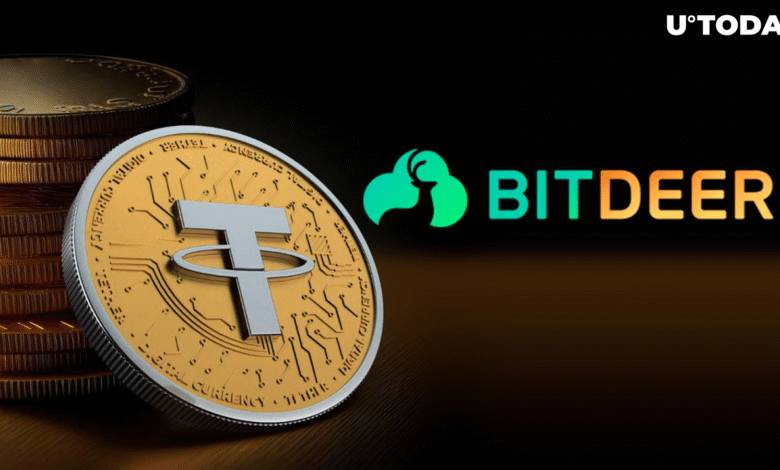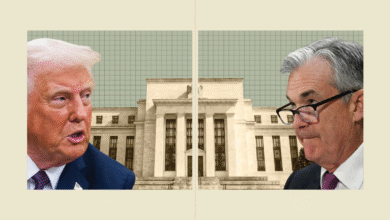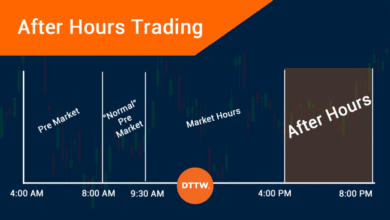Tether $150 Billion Milestone: Leading the Stablecoin Market

Tether has achieved a remarkable feat by surpassing the $150 billion milestone in market capitalization, solidifying its position as the largest stablecoin in the crypto economy. According to the latest data from Tether’s reserves portal, the circulating supply of USDT has hit the impressive figure of 150.056 billion, representing 4.47% of the entire crypto market, valued at $3.36 trillion. This impressive milestone underscores Tether’s dominance within the stablecoin market, where it accounts for a staggering 61.80% of the total valuation of fiat-pegged tokens, currently standing at $242.82 billion. Tether’s continuing success demonstrates the increasing demand for stable assets amidst the growing volatility of cryptocurrencies. As the backbone of many trading systems, USDT not only provides liquidity but also reinforces its status as the go-to fiat-backed digital asset for traders around the globe.
In recent developments, Tether $150 billion milestone highlights a pivotal moment for fiat-linked cryptocurrencies, particularly as it continues to outperform its competitors in the stablecoin sector. As the premier asset within the realm of digital currencies, Tether, also known as USDT, captures the growing interest of investors seeking stability amid market fluctuations. The remarkable expansion of its circulation reflects not only the increasing adoption of digital currencies but also the integral role that stablecoins play in facilitating transactions within the broader financial landscape. With major financial entities and innovative digital platforms vying for their share in the dynamic crypto ecosystem, Tether’s continued growth defines the competitive landscape of fiat-pegged tokens. This milestone signals both an opportunity and a challenge for emerging digital assets aspiring to claim market share in the rapidly evolving space.
Tether Achieves $150 Billion Milestone
Recently, Tether’s USDT has surpassed a remarkable milestone, officially exceeding $150 billion in circulation. This significant achievement emphasizes Tether’s dominance in the stablecoin market and its unwavering position as the leading issuer of fiat-pegged tokens. The latest reports indicate that a staggering 150.056 billion USDT is currently in circulation, translating to approximately 4.47% of the cumulative valuation of the crypto economy, which stands at around $3.36 trillion.
The swift ascent of Tether’s market cap reflects the growing trust and reliance cryptocurrencies leverage on stablecoins like USDT. As the largest stablecoin, Tether not only outperforms rivals by billions but also showcases its capacity to adapt and thrive amidst an evolving financial landscape. This achievement undoubtedly solidifies its reputation as a fundamental asset for traders, investors, and various platforms within the cryptocurrency space.
Tether’s Dominance in the Stablecoin Market
Tether has maintained an unparalleled foothold in the stablecoin market, commanding an impressive 61.80% share of the total $242.82 billion valuation of fiat-pegged tokens. The company’s ability to consistently expand its USDT supply across various blockchain platforms underlines its innovative approach and the robust infrastructure it has established. Currently, the majority of Tether’s tokens are distributed among major chains like Tron and Ethereum, which facilitate the token’s utility and increase its market reach.
With Tether’s USDT leading the charge, the stablecoin market has seen a profound evolution. Alternative stablecoins, including Circle’s USDC, while growing, remain significantly behind Tether in terms of market capitalization. The resilience shown by Tether against the backdrop of emerging competitors and digital payment giants only underscores the strength of its established brand, making it the go-to choice for users seeking stability in a volatile crypto environment.
Diverse Blockchain Distribution of USDT
One of Tether’s strategic advantages lies in the broad distribution of its USDT across multiple blockchain platforms, enhancing accessibility and usability. Currently, Tron leads as the dominant blockchain supporting USDT, with a circulation nearing $73.19 billion. Following closely is Ethereum, which also hosts a hefty $71.72 billion of Tether’s tokens. This multi-chain approach not only ensures liquidity but also positions USDT favorably to harness blockchain innovations and meet diverse user needs.
In contrast to its initial launch via the Omni Layer, Tether has embraced new technologies to broaden its reach. This has allowed USDT to thrive on networks like Solana and Aptos, which are newer entrants in the blockchain space. By adapting to various blockchain environments, Tether ensures that it remains relevant and widely utilized, further solidifying its dominance in an increasingly competitive stablecoin market.
Challenges Ahead for Tether and the Stablecoin Sector
Even with its current lead, Tether faces significant challenges as the stablecoin sector evolves. With established payment platforms such as PayPal entering the fray with their own forms of digital currency, the competitive landscape is shifting. Analysts wonder how long Tether can sustain its supremacy in the face of rising alternatives and whether established financial institutions might pose a threat as they explore minting their own fiat-linked tokens.
Tether’s historical resilience will be put to the test as new challengers emerge. Some fear that innovation and changes in regulatory frameworks could alter user preferences and trust in established brands. Moreover, apprehensions about potential regulatory crackdowns could impact the operations of stablecoins, including USDT, making it imperative for Tether to articulate a robust strategy moving forward.
Understanding the Implications of Tether’s Growth
Tether’s remarkable growth and achievement of surpassing the $150 billion milestone carry significant implications for the broader cryptocurrency ecosystem. As the largest stablecoin, USDT serves as a critical liquidity provider for traders and represents a key element in various decentralized finance (DeFi) applications. Its strength not only affirms the concept of stablecoins but also highlights their essential role in bridging the gap between fiat currency and digital assets.
Additionally, Tether’s dominance reinforces the necessity for regulatory clarity regarding stablecoins. As the market expands, addressing compliance and transparency becomes paramount for maintaining user confidence and attracting institutional investors. Tether’s substantial market share showcases the potential of fiat-pegged tokens while underscoring the evolutionary and regulatory challenges that lie ahead.
The Role of USDT in Navigating Crypto Volatility
As a substantial player in the crypto economy, Tether’s USDT functions as a crucial tool for navigating the market’s volatility. Traders often rely on stablecoins like USDT to hedge against sharp price fluctuations seen in cryptocurrencies. This strategic utility not only enhances the stability of trading environments but also fosters liquidity across exchanges, reinforcing Tether’s position as the preferred choice among traders.
The perception of USDT as a secure asset capable of holding value amid the crypto market’s fluctuations adds to its appeal. While conventional cryptocurrencies are often susceptible to drastic changes, Tether’s pegging to the U.S. dollar provides a safety net, making it an integral part of any trader’s portfolio. Consequently, Tether’s $150 billion milestone reflects not just a number, but a significant marker of trust and reliability in the cryptosphere.
Comparative Analysis: Tether vs. Other Stablecoins
In the stablecoin race, Tether stands out not only through its $150 billion milestone but also by demonstrating a marked contrast to its competitors, particularly USDC by Circle, which currently commands a $60.7 billion market cap. Understanding the disparities in how these stablecoins operate and their respective backing mechanisms is crucial for new investors. Tether’s long-standing presence and market dominance provide a perception of reliability and stability that newer entrants haven’t fully established yet.
Additionally, the operational foundations of Tether’s USDT, including its transparency measures concerning reserves, continue to play a vital role in maintaining user trust. While newer stablecoins attempt to differentiate through various features, the solid backing and extensive adoption already established by Tether continue to reinforce its stronghold, showcasing why it remains the largest stablecoin in the market.
The Future of Tether and the Stablecoin Ecosystem
Looking ahead, the future of Tether and the entire stablecoin ecosystem appears to be on the brink of significant transformations. With regulatory frameworks evolving and more traditional financial players entering the digital currency space, Tether’s adaptability will be tested. The organization must not only focus on maintaining its lead in the market but also on complying with emerging regulations that govern stablecoins and cryptocurrency transactions.
Moreover, as competition heats up, Tether’s response to innovation, liquidity needs, and market demands will define its longevity. The success of USDT in surpassing the $150 billion threshold positions it well for further growth, provided it can navigate these challenges effectively. Engaging in strategic partnerships and embracing technological advancements will be essential for Tether to retain its prominence in the years to come.
Tether’s Community and User Engagement Strategies
Building a robust community around Tether’s USDT has played a pivotal role in its rise to prominence. Close engagement with users, traders, and developers has fostered trust in the brand while enhancing educational initiatives, aimed at bolstering understanding of stablecoins and their utility in the financial landscape. Tether’s proactive communication about reserves and transparency efforts have continued to reassure users of its stability as the market fluctuates.
Furthermore, Tether’s initiatives to provide resources and stir discussions around the crypto economy have positioned it as an industry leader, drawing in both frequent users and new entrants alike. By creating such a vibrant community, Tether not only fuels its own growth but also nurtures the broader acceptance and understanding of crypto and stablecoin utilization. This community-centric approach sets a standard that many rivals will need to meet to compete effectively with the industry leader.
Frequently Asked Questions
What does Tether’s $150 billion milestone mean for the stablecoin market?
Tether’s $150 billion milestone signifies its dominance in the stablecoin market, accounting for approximately 61.80% of the total $242.82 billion in fiat-pegged tokens. This milestone not only emphasizes Tether’s vast adoption but also solidifies its position as the largest stablecoin by market capitalization in the crypto economy.
How has Tether’s USDT reached the $150 billion milestone?
Tether’s USDT has reached the $150 billion milestone due to a substantial increase in its circulation, with 150.056 billion USDT now in circulation. This growth is attributed to its wide acceptance across various blockchain networks, particularly on Tron and Ethereum, where it commands significant issuance amounts.
Is Tether’s $150 billion milestone sustainable in the current crypto economy?
While Tether’s $150 billion milestone reflects strong market presence, its sustainability may be challenged by competitors like Circle’s USDC and potential entrants from major financial institutions. However, Tether has maintained a robust lead and remains the preferred choice for many in the crypto economy.
What percentage of the crypto economy does Tether represent after surpassing the $150 billion milestone?
Tether now represents approximately 4.47% of the total $3.36 trillion valuation of the broader crypto economy after surpassing the $150 billion milestone, showcasing its significant role in the digital asset landscape.
Which blockchain holds the most USDT following Tether’s $150 billion milestone?
Following Tether’s $150 billion milestone, the Tron blockchain holds the most USDT with $73.19 billion in circulation. This positioning reinforces Tron’s dominance in facilitating Tether transactions within the stablecoin market.
How does Tether’s market cap compare to its nearest competitor?
With Tether’s current market cap surpassing $150 billion, it significantly outpaces its nearest competitor, Circle’s USDC, which has a market cap of $60.7 billion, further establishing Tether’s leading position in the stablecoin sector.
What implications does Tether’s $150 billion milestone have for the future of stablecoins?
Tether’s $150 billion milestone reinforces its status as a leader in the fiat-pegged token sector while raising questions about the future of stablecoins. As new players and traditional financial institutions consider entering the market, Tether’s supremacy may face challenges, necessitating innovation and adaptability.
How does Tether ensure the security of its $150 billion in USDT?
Tether guarantees the security of its $150 billion in USDT through its reserves, which are regularly audited and disclosed. This transparency is crucial in instilling trust among users and maintaining stability within the volatile crypto economy.
What factors contributed to Tether becoming the largest stablecoin with a $150 billion valuation?
Factors such as extensive adoption across multiple blockchains, a robust ecosystem of users and merchants, and the reliability of the USDT token linked to the U.S. dollar have propelled Tether to become the largest stablecoin, now valued at over $150 billion.
What are the risks tied to Tether’s $150 billion milestone?
Despite celebrating a $150 billion milestone, risks for Tether include regulatory scrutiny, market competition, and potential volatility in the crypto economy. As the largest stablecoin, maintaining trust and compliance will be pivotal for its continued leadership.
| Key Points | |
|---|---|
| Tether surpasses $150 billion in circulation for the first time | Tether is the largest fiat-referenced digital asset with a market cap of $150.056 billion |
| Tether’s USDT comprises 4.47% of the total crypto economy valued at $3.36 trillion | Tether holds 61.80% of the $242.82 billion fiat-pegged token sector |
| USDT distribution: Tron leads with $73.19 billion, followed by Ethereum at $71.72 billion | Smaller distributions on Solana ($1.93 billion), Ton ($0.99 billion), and Aptos ($0.73 billion) |
| Tether maintains dominance despite competition from newer stablecoins and institutions | The closest competitor is Circle’s USDC with a market cap of $60.7 billion |
Summary
The Tether $150 billion milestone marks a significant achievement for the stablecoin industry, underscoring Tether’s dominance as the leading fiat-referenced digital asset. With its record-breaking circulation of over $150 billion, USDT continues to hold a commanding position in the cryptocurrency market, representing a substantial portion of both the total crypto economy and the fiat-pegged token sector. This triumph comes amidst rising competition, yet Tether’s adaptability across multiple blockchains secures its status. However, the ever-evolving landscape of digital currencies indicates that maintaining this supremacy will require ongoing innovation and strategic responsiveness to new market entrants.




